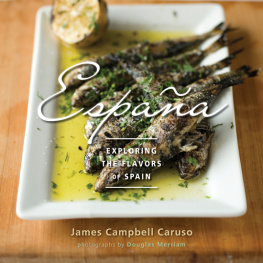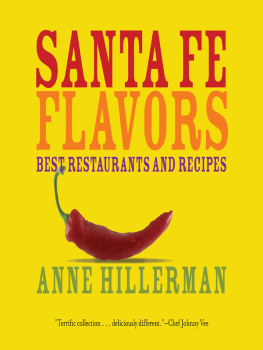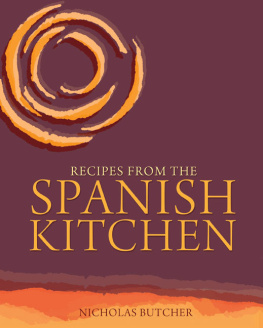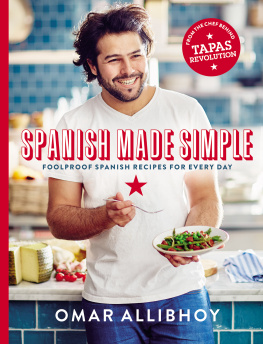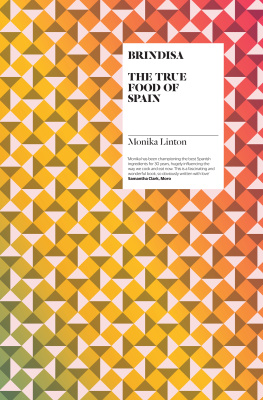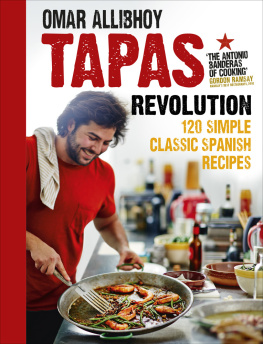Acknowledgments
Thanks to:
Leslie, Emma and Liam, Gibbs Smith, Ilana Blankman, Jose Rodriguez, Sandra and the pastry team, Manuel Luis Suarez, Adam Johnson, Goler Shoes, Doug Merriam, Santa Fe School of Cooking and the entire Curtis Family, Hutton Broadcasting, LuXX Hotel, Inger at the St. Francis, Frankie Lucero, Raul Chico Goler, Miguel Villalpando, Jade Adams, Masa at Sushi Land East, Il Piatto, Matt and Honey, Guadalupe Goler and family, Katelin Walters, Eric Stapelman, Marty and Nancy Spei, Mark and Nicole Tobiessen, Nacha Mendez, Bralt Bralds, Rocky Durham, Ricardo Martinez, Roland Van Loon, the Mudponies, Jono Manson, Loren Nickell-Jones, Susanna Bustamante, Kaitlin Walters, Elena Ailes, Alena Morales, Maria and Lawrence Baca and family, Hugh Elliot, Evoke Gallery, InArt Gallery, Blue Rain Gallery, Rob DeWalt, Johnny V, Larry and Design Warehouse, Paul D. Dominico and family, Santa Fe Reporter, Gweneth Dolan, Sam Shepard, Giada DeLaurentis, Ginny Walden, The Spanish Table, Basque Club, Ted Nugent, Lola and Miguel, Beti Jai, La Cuchara de San Telmo, Gerry Dawes, the Sherry Council of America, Copa Jerez, Heidi Stine and TAPAS, Rouge Cat, Action Coach, AWFS, the New York Times, Welcome to Bohemia, Jambo Caf, Plaza Caf, Oliver Ridgeway, Just the Best, Matt Romero, Santa Fe Farmers Market, The Bullring, Greg OByrne, Chango (the Band), Maris Hutchinsen, Colleen Hayes, Conrad Crespin, Aaron Crespin, Jill Cashman, Jay Romero, Shar Ximenez, Doug and Sharron Gray, Cynthia and Ian and family, Serena, Gerry Dawes, Mark Miller, David Sellers, Mark Kiffin, Santa Luna, Local Flavor, Fiasco Wines, Classical Wines, Lily and Charlie OLeary, Cooking with Kids, Santa Fe Wine and Chile Fiesta, Los Gatos, La Anchoita, Miguel and Lola, Santa Fe Community College, Joe Fuka, Jean Moore, Pais Vasco, Euskadi, Kathie DiCorta, and Paul Hunsicker, Miguel Velasquez, Campbells, Sweeneys, Farrows, Foti family, Kenneys, Adelmans, Nardelli family, Leslie V. Campbell.
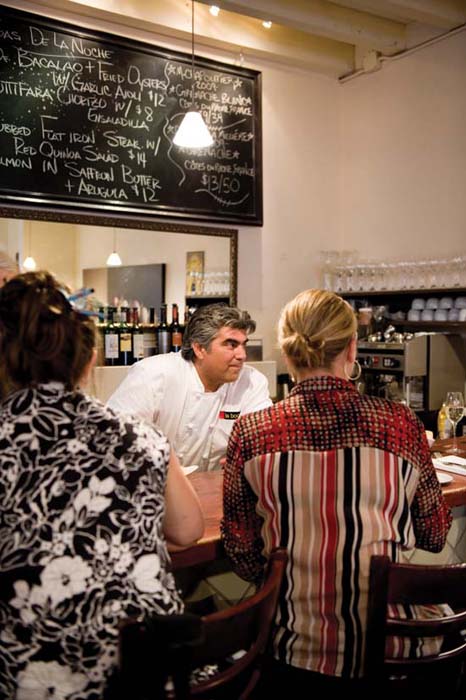
Nuances of Spanish Flavor
Why do some cultures, some countries, some cities, and some families have great food and others do not? The answer resides in the groups willingness to deem cooking important. When you go anywhere in Spain, you realize in the first ten minutes that cooking is very important to these people. By the end of the day you realize it is not just important, it is sacred. There is a long and well-celebrated culinary history there. The Spaniards have great strength of character, which makes them proud and exuberant cooks. Their complex reality weaves a story of many cultures with sometimes tumultuously opposing political histories. Moors, Basques, Celts, Romans, and French have all contributed to this mosaic. There is intense feeling and emotion toward food that is deeply rooted in the Spanish identity. Life in Spain can be delicatelike saffron and honeyor fiercelike bold peppers and chorizos. History and passion combine to make the cuisine a celebration and extension of this great heritage.
As a chef and a cook, I like to absorb ideas and bits of information from lots of sources that will combine to make me a better cook. I have been a chef and student of Spanish cooking for many years. There is a deep, fertile spring of inspiration to be found here. This book is the result of getting to know the ingredients and trial and error with using different flavor combinations.
So, rather than documenting classic regional dishes, what I offer the reader here is a journal of recipes that are a result of my exploring flavors. The style of these recipes could be classified as a blend of traditional and modern. I do not try to replicate the classics when I cook. Instead I immerse myself in the mind-set of great cooking, which should be a balance of knowing the traditional ingredients, techniques, and flavor combinations without letting these limit the imagination.
I discuss specific ingredients, flavors, and recipes in the pages that follow. But there are layers of flavors and hidden nuances that are not found in the recipes themselves. There is much to learn from this vast culinary landscape that can make us better cooks. I do not talk about having expensive knives and copper cookware, the latest food processor or watching the chefs on the food channel. None of these things will improve your cooking. Simply ask yourself when you are enjoying a great meal, Why does this taste so good? Here are a few answers my focus on Spanish cooking has revealed.
National pride is a flavor
The bustling streets of Madrid are alive with exuberance and pride. The cuisine is an integral part of life. The tapas bars are a proud display of jamn, chorizo, manchego, and olive oil. Madrilenos have a robust appetite for the real thing and enjoy educating visitors on their authentic dishes. Chefs at the food markets have strong relationships with growers, suppliers, and vendors. These relationships are vital and many were formed over generations. Again, cooking is important! Very basic, down-to-earth flavors can yield thrilling and sophisticated results when these relationships remain intact. Cooking is done with pride and is worn like a badge of honor.
Tradition adds flavor
A great culture is one that is well defined. To know the traditions and to love them and hold them sacred gives tremendous strength and foundation, and only then can you face the rest of the world with fearlessness. The biggest fear for someone holding to traditional culture in the modern age is that they will go too far, be left out on a limb, become lost and unable to find their way back. When the tradition is strong, there is no doubt that it will stay intact no matter how far you go.
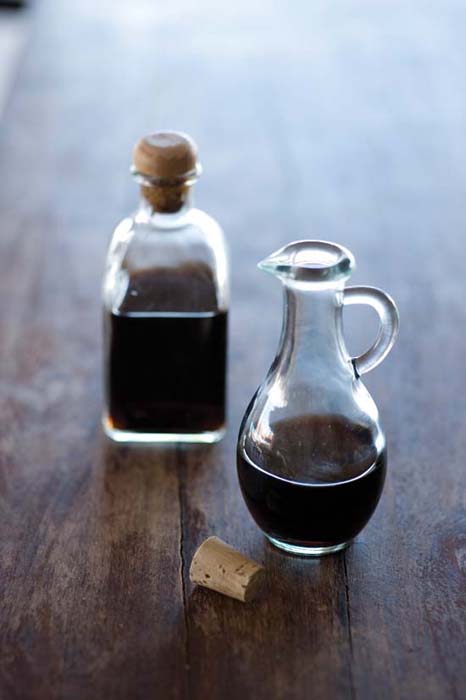
Spaniards were able to literally go out to all corners of the earth exploring and conquering new worlds. They leapt fearlessly into the unknown. My favorite example of this is in the city of San Sebastian, where the old-world food traditions are solidly ingrained and deliciously evident when you stroll down the street. It does not surprise me, then, given my theory explained above, that this was also the birthplace of the greatest innovations in modern gastronomy and continues to redefine where the cutting edge is. In fact, this pattern is well documented in many areas of Basque life.
Exuberance adds flavor
Keep the capacity to be surprised, as famous Basque chef Juan Mari Arzak says. Passionate cooks cannot hide their affection for a perfectly ripe tomato or deny that the aroma of fresh bread can be the source of an emotional experience. New dishes will inspire more cooking, and the excitement builds in anticipation of what is yet to come in the culinary world. This is unfinished business and the surprises will keep flowing.

